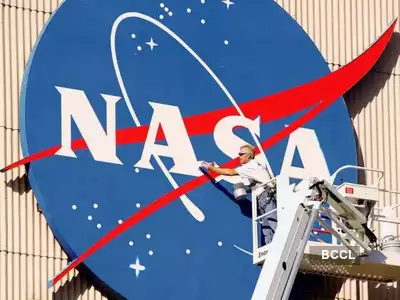NASA’s Hubble detects water vapor in the atmosphere of exoplanet GJ 9827d
NEW DELHI: Researchers have detected water vapor in the atmosphere of GJ 9827d, the smallest exoplanet discovered to far, using NASA’s Hubble Space Telescope. According to a NASA press statement, the planet, which is just slightly larger than Earth, may be a sign of additional planets in our galaxy that have atmospheres rich in water.

The current understanding is uncertain: either the planet primarily has a water-based atmosphere, a remnant after its original hydrogen/helium atmosphere was vaporized by stellar radiation, or the Hubble has detected a small amount of water vapor within a primarily hydrogen-rich atmosphere.
Regarding this discovery’s originality, Björn Benneke said, “Up until now, we had not been able to directly detect the atmosphere of such a small planet.” And now we’re gradually implementing this regime.” He also made assumptions about how smaller planets’ atmospheres might change, drawing comparisons to Venus, whose atmosphere is mostly composed of carbon dioxide.
GJ 9827d would be a steaming, inhospitable planet with surface temperatures as high as Venus, reaching around 800 degrees Fahrenheit, assuming its atmosphere is predominantly made of water vapor.
Two options for the planet’s atmospheric makeup are now being considered by the crew. According to one idea, GJ 9827d is still considered to be a mini-Neptune since it has an atmosphere that is mostly hydrogen with some water. On the other hand, it may resemble a milder Europa, the moon of Jupiter that is well-known for having an underground sea. According to Benneke’s theory, GJ 9827d may be half rock and half water. And on top of a smaller rocky body, there would be a lot of water vapor.”
If the planet has survived to retain a water-rich atmosphere, it most likely formed farther away from its host star, where the temperature is lower and water is found in the form of ice. Later, the planet migrated closer to the star and experienced severe radiation exposure, which heated the hydrogen and may have caused it to escape. According to the alternative theory, the planet originated close to the blazing star and had a little quantity of water in its atmosphere.
Over the course of three years, 11 transits, Hubble spotted GJ 9827d. Astronomers were able to examine the spectral signature of water molecules in the planet’s atmosphere thanks to these observations. If clouds exist on the planet, they are low enough to not get in the way of Hubble’s observations, making it possible to detect water vapor above the clouds.
The significance of this discovery was emphasized by NASA’s Ames Research Center astronomer Thomas Greene, who said, “Observing water is a gateway to finding other things.” He looks forward to continued research using NASA’s James Webb Space Telescope, which will provide deeper infrared views and maybe even find more essential chemicals.
GJ 9827d is in orbit around GJ 9827, a red dwarf star in the constellation Pisces that was found in 2017 by NASA’s Kepler Space Telescope. The exoplanet is located 97 light-years from Earth and completes its orbit every 6.2 days.
The Hubble Space Telescope is a joint venture between NASA and the European Space Agency. It is overseen by NASA’s Goddard Space Flight Center in Maryland, while the Space Telescope Science Institute in Baltimore is in charge of its scientific operations.
Ray Villard from the Space Telescope Science Institute in Baltimore, Pierre-Alexis Roy, and Björn Benneke from the Trottier Institute for Research on Exoplanets at the Université de Montréal are among the people who helped with this finding and report.







